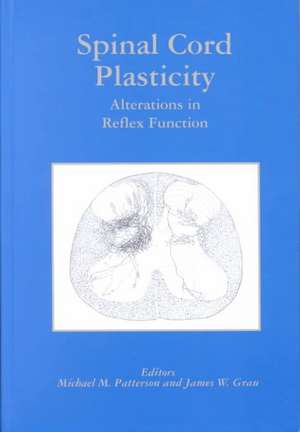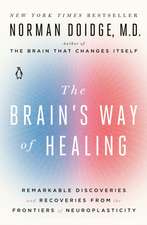Spinal Cord Plasticity: Alterations in Reflex Function
Editat de Michael M. Patterson, James W. Grauen Limba Engleză Hardback – 30 iul 2001
| Toate formatele și edițiile | Preț | Express |
|---|---|---|
| Paperback (1) | 1073.64 lei 6-8 săpt. | |
| Springer Us – 23 oct 2012 | 1073.64 lei 6-8 săpt. | |
| Hardback (1) | 1080.65 lei 6-8 săpt. | |
| Springer Us – 30 iul 2001 | 1080.65 lei 6-8 săpt. |
Preț: 1080.65 lei
Preț vechi: 1137.53 lei
-5% Nou
Puncte Express: 1621
Preț estimativ în valută:
206.88€ • 212.76$ • 171.63£
206.88€ • 212.76$ • 171.63£
Carte tipărită la comandă
Livrare economică 19 februarie-05 martie
Preluare comenzi: 021 569.72.76
Specificații
ISBN-13: 9780792374459
ISBN-10: 0792374452
Pagini: 243
Ilustrații: VII, 243 p.
Dimensiuni: 155 x 235 x 16 mm
Greutate: 0.54 kg
Ediția:2001
Editura: Springer Us
Colecția Springer
Locul publicării:New York, NY, United States
ISBN-10: 0792374452
Pagini: 243
Ilustrații: VII, 243 p.
Dimensiuni: 155 x 235 x 16 mm
Greutate: 0.54 kg
Ediția:2001
Editura: Springer Us
Colecția Springer
Locul publicării:New York, NY, United States
Public țintă
ResearchDescriere
The area of spinal cord plasticity has become a very actively researched field. The spinal cord has long been known to organize reflex patterns and serve as the major transmission pathway for sensory and motor nerve impulses. However, the role of the spinal cord in information processing and in experience driven alterations is generally not recognized. With recent advances in neural recording techniques, behavioral technologies and neural tracing and imaging methods has come the ability to better assess the role of the spinal cord in behavioral control and alteration. The discoveries in recent years have been revolutionary. Alterations due to nociceptive inputs, simple learning paradigms and repetitive inputs have now been documented and their mechanisms are being elucidated. These findings have important clinical implications. The development of pathological pain after a spinal cord injury likely depends on the sensitization of neurons within the spinal cord. The capacity of the spinal cord to change as a function of experience, and adapt to new environmental relations, also affects the recovery locomotive function after a spinal cord injury. Mechanisms within the spinal cord can support stepping and the capacity for this behavior depends on behavioral training. By taking advantage of the plasticity inherent within the spinal cord, rehabilitative procedures may foster the recovery of function.
Cuprins
Foreword. 1. Spinal Plasticity; R.F. Thompson. 2. Pavlovian and Instrumental Conditioning Within the Spinal Cord: Methodological Issues; J. W. Grau, R.L. Joynes. 3. Pavlovian Conditioning of Flexion Reflex Potentiation in Spinal Cat: Temporal Effects Following Spinal Transection; R.G. Durkovic. 4. Spinal Fixation: Long-term Alterations in Spinal Reflex Excitability With Altered or Sustained Sensory Inputs; M.M. Patterson. 5. Spinal Cord Plasticity in the Acquisition of a Simple Motor Skill; J.R. Wolpaw. 6. Mechanisms of Central Sensitization of Nociceptive Dorsal Horn Neurons; W.D. Willis, Jr. 7. Noxious Stimulus-Induced Plasticity in Spinal Cord Dorsal Horn: Evidence and Insights on Mechanisms Obtained Using the Formalin Test; T.J. Coderre. 8. Neural Darwinism in the Mammalian Spinal Cord; V. Reggie Edgerton, et al. 9. Spinal Cord Plasticity Associated with Locomotor Compensation to Peripheral Nerve Lesions in the Cat; L. Bouyer, S. Rossignol. 10. Laufband (Treadmill) Therapy in Incomplete Para- and Tetraplegia; A. Wernig, et al. Index











